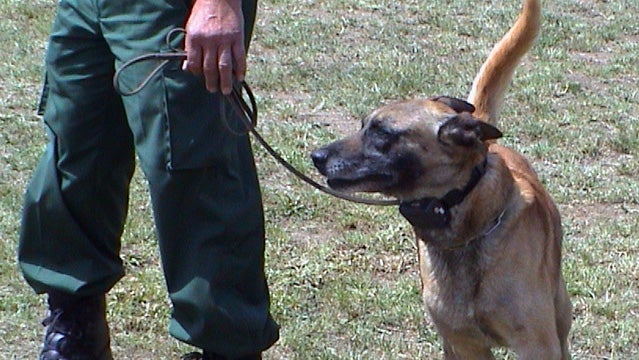OK, so we have an independent-minded, self-employed dog that just will not come when there are tempting distractions. What then?
The Ultimate ���ϳԹ��� Companion
All you need to know about going wild with man’s best friend.If parts I and II of our recall training did not work, we have the final option of force. An effective tool is the electric collar. I recommend e-collars only as a last resort for stopping a determined dog from engaging in dangerous or uncontrollable behaviors like chasing cars, bolting, or chasing animals. Using a modern e-collar with variable levels of intensity, we can apply just enough discomfort to get results. The training begins at the lowest setting of intensity that will get a response from your dog.
First, teach the dog the appropriate command as we did in parts I and II. You can’t teach anything with an e-collar—only reinforce what the dog already knows. To assure a response in the field when those interesting distractions appear, we will want to begin training with our dog close to us backed up with a 50-foot check cord.
1. Place the e-collar on the dog as instructed by the manufacturer.
2. Work the dog for several weeks through obedience skills just wearing the collar so they become accustomed to it.
3. Test the level of responsiveness on the lowest level possible. Walk the dog forward, then abruptly back away in a reverse heel while calling the dog to you. As the dog turns, activate the collar as you give the recall command. Hold the button down until the dog takes his first step toward you. If he doesn’t respond, use the check cord to encourage them forward.
4. Our student quickly learns that coming toward you relieves the discomfort. Now, gradually lengthen the distance and distraction of your recall in small increments. Each time, be consistent: 1) Call the dog, 2) activate the collar, 3) release the button as the dog comes forward.
CAUTIONS, WARNINGS, AND DOWNSIDES
1. Never use an e-collar to punish a dog, and never lose your temper. E-collars are incredibly powerful tools but can deliver incredible pain (like a wall socket or stun gun) at the touch of a button. Treat the button with respect.
2. E-collars are a good training tool when they’re necessary, but they make a terrible training methodology. As with a choker chain and other training equipment, an e-collar shouldn’t be used as a crutch to make up for a trainer’s lack of ability or experience. Before you convince yourself that your dog is too stubborn to learn, have a professional evaluate your training style. Oftentimes it’s the handler and not the dog that needs correcting.
3. If you’re using an e-collar, you’re using it to correct undesirable behaviors. You’ll know you’ve succeeded when you no longer have to use the collar. Always keep this in mind. Once you start using the collar, it’s hard to stop.
4. If you use the collar for any length of time, you’re certain to end up with a dog that has two personalities: One with the collar on that obeys; one without the collar that does what it wants.
An electric collar is often euphemistically described as “stimulation” or “pressure.” That’s not quite right. An e-collar produces an electric shock that all dogs (and humans and just about everything else with a nervous system) know to avoid after very brief contact. The dog avoids the shock or relieves the shock by responding to the command. Never use the collar until the command is totally understood, then keep the collar on for extended periods of time so your dog does not become collar wise.
This is the training method of last resort, never to be considered a shortcut, only used for the most difficult subjects that continue to behave in a dangerous or uncontrollable behavior.
This article originally appeared on ���ϳԹ��� K9, the former dog blog of ���ϳԹ��� magazine, on April 6, 2009.


